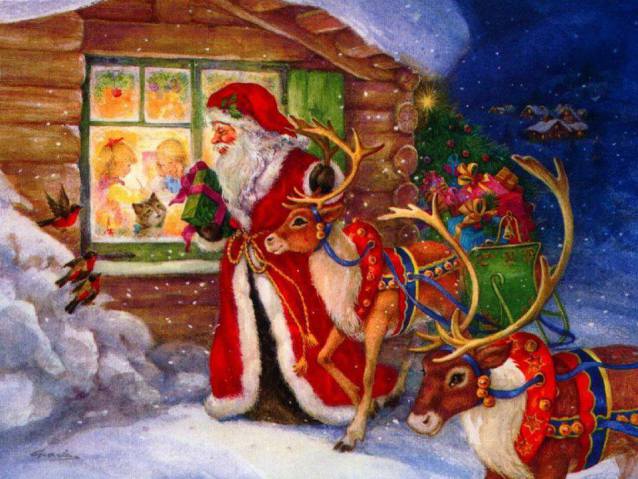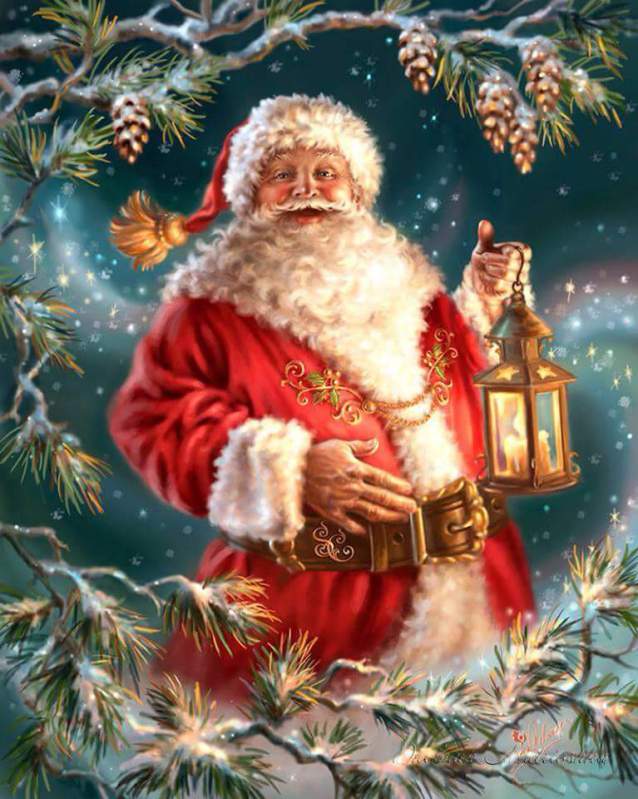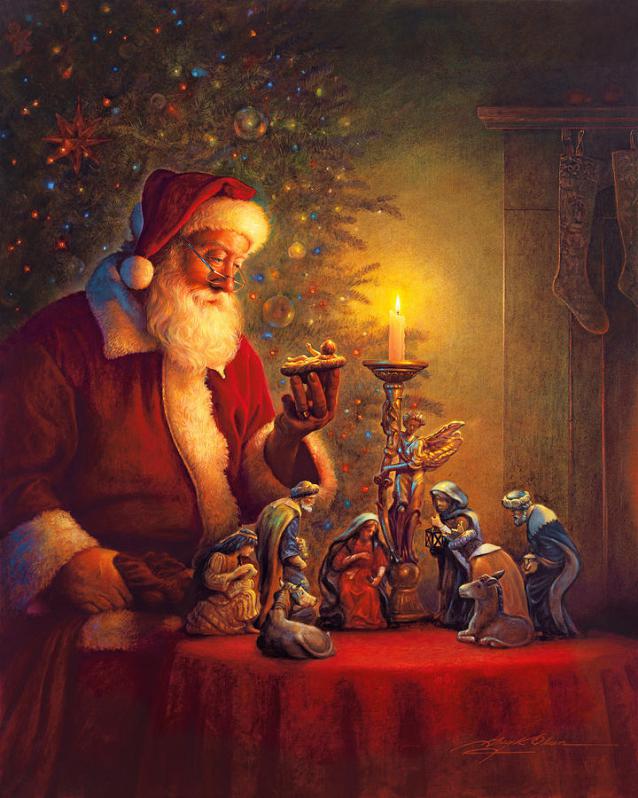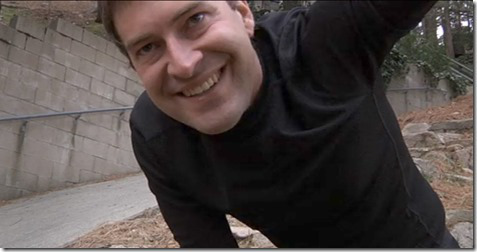Christians often boycott and denounce Halloween as a pagan holiday because of its Celtic roots. They despise Halloween’s rowdiness, its excesses, its darkness, and its supposedly unChristian character. They latch onto internet fear-mongering, unsubstantiated rumors, and Roman propaganda, and repeat them as if they are the true facts about the autumn harvest festival known as Samhain (i.e. Halloween). However, those same Christians generally celebrate Christmas, merrily decking their halls with boughs of holly, singing Christmas carols, and kissing each other under the mistletoe. What these Christians do not understand is that Christmas is every bit as pagan as Halloween – if not more so.
I write this article for two reasons: 1) To point out and discourage the holiday hypocrisy I see in the Christian community; and 2) to give a brief overview of the true history of Christmas.

Though it is unpopular to say, the fact is that Christmas is a thoroughly pagan holiday. Nearly every Christmas tradition we cherish has its roots in paganism. Some of these traditions come from Yule, the Germanic/Nordic holiday, whereas others find their genesis in pagan Rome and beyond. The reason we sing “Troll the ancient Yule-tide carol” in “Deck the Halls” is because of the Yule traditions that were repackaged as Christian ones.
In the beginning, and for millennia thereafter, Christmas was a rowdy, drunken festival celebrated by pagans in many lands. It was closer in ambiance to modern Carnival, Mardi Gras, or Oktoberfest than to our modern American Christmas. Early Christmases were not times to commemorate the birth of Christ or gather for worship services. Indeed, the Catholic Church condemned Christmas because of its pagan roots. Ironically, it was the Catholic Church which selected December 25th – a widespread pagan feast day – to commemorate the Savior’s birth (in reality, the Lord was born during the spring. And, contrary to popular myth, the wise men were not magi, but righteous men of God. We get our word magician from the Persian word “magus,” which is the singular of magi. Calling the wise men magicians is not only insulting, but it contradicts the scriptures which plainly condemn sorcery in all its forms).
At Christmas time, the social order was flipped upside down. If you remember the Feast of Fools as depicted in the film The Hunchback of Notre Dame, you have an idea of what Christmas used to be like. Indeed, the Feast of Fools was a part of the winter celebratory tradition. During these drunken festivities, aristocrats were expected to wait on the poor and open their doors to them. Groups of peasants – more akin to mobs than anything – would roam from door to door, knocking and demanding food and other items. If the home owners did not open their doors, the mobs often broke them down and treated themselves to whatever they wanted. Not surprisingly, excessive amounts of alcohol were consumed on Christmas, and it was common to see people cross-dressing or to hear of wild orgies. The presiding figure of these feasts was called the “Lord of Misrule.” Among holidays, Christmas itself might be called the “Lord of Misrule.”
Whereas Celtic Samhain served important legal and social functions – such as the settling of debts, the execution of criminals, the slaughtering or purchasing of livestock, and the renting of land – Christmas was a purely indulgent event. The religious connotations of Christmas, like those of Samhain, involved paganism. From the burning of the Yule log to the singing of vulgar carols to the hanging of the mistletoe to the chopping down of evergreens, Christmas traditions relied on pagan spirituality and superstition.

Author Ace Collins has written:
“Only in relatively recent times, the past two hundred years, has Christmas been celebrated by most Christians. Up until the 1800s, the day recognized as Christ’s birthday was largely a pagan celebration. Those who bemoan the lack of religious zeal in modern Christmases would have been appalled at the way people in early America celebrated the day. For a majority of people who embraced Christmas throughout history, Christ wasn’t a part of the day at all. In most of the world, especially in England and America, Christmas was not a time of worship, prayer, and reflection: rather, it was a day set aside to sing bawdy songs, drink rum, and riot in the streets.
“For centuries, Christmas was anything but a holy day. It was most often a sinful parade of excess, a day set aside for ignoring laws and even terrorizing citizens. Mummers, the British carolers of the day, were musicians and actors who roamed the streets, presenting plays and singing songs. Mirroring the boisterous nature of the English Christmas, these songs rarely acknowledged the Christian aspects of the holiday. Those who attended church did so in wild costumes, the messages of many priests were anything but scriptural, and gambling was common during the services. After church the poor often stormed the homes of the elite in moblike fashion, pounding on doors and windows, demanding the finest food and drink. If the hosts did not respond, the guests broke into the homes and took what they wanted. This combination “holiday” of Mardi Gras and Halloween was nothing like today’s Christmas. The drunken celebrations hearkened back to the time when Romans and Greeks marked the winter solstice and a weeklong festival of self-indulgence. As nothing about these celebrations was staid or reverent, many devoted Christians loathed the holiday and considered it an instrument of sin and evil” (Ace Collins, Stories Behind the Great Traditions of Christmas, 9-11).
Two Wiccans, Laurie Cabot and Jean Mills, have written:
“Yule, with all of its pagan customs of lighting trees and displaying holly, ivy, and pine boughs in the home, shares an intimate relationship not only with Christmas but with the entire Season of Light – Chanukah, Kwanzaa, La Posadas, and St. Lucia’s Day, among others. Society often overlooks the overwhelming contribution by Witches to this time of year. Christians bring trees into their homes, light candles, and give each other gifts, never really knowing why they follow such accepted social behavior. The symbolic, spiritual, cultural, religious, and ecological meaning behind our modern holiday activities is directly linked to our ancient pagan origins . . . Yule is the Celtic bonfires of old driven indoors by the cold weather.
“The connection between Yule and today’s modern holiday practices is so strong that these ancient traditions work well with holiday habits we are accustomed to. Father Winter is an ancient pagan figure whom many will recognize. He dons fur-trimmed red robes, has a white beard, and gives gifts to children. In olden times he gave fruit and plants and magical herbs . . . Witches burn an oak Yule log, charging another in our Magic Circle, which will be kept in a sacred space until the next Winter. . . .
“No matter how we choose to celebrate, the pagan spirit enhances and enriches the Yuletide season” (Laurie Cabot and Jean Mills, Celebrate the Earth: A Year of Holidays in the Pagan Tradition, 76-77).
Along the same lines as Collins, historian Stephen Nissenbaum has observed:
“In New England, for the first two centuries of white settlement most people did not celebrate Christmas. In fact, the holiday was systematically suppressed by Puritans during the colonial period and largely ignored by their descendants. It was actually illegal to celebrate Christmas in Massachusetts between 1659 and 1681 (the fine was five shillings). Only in the middle of the nineteenth century did Christmas gain legal recognition as an official public holiday in New England” (Stephen Nissenbaum, The Battle for Christmas, 3).
Nissenbaum gives us more of the historical background of this rowdy holiday:
“It was only in the fourth century that the Church officially decided to observe Christmas on December 25. And this date was chosen not for religious reasons but simply because it happened to mark the approximate arrival of the winter solstice, an event that was celebrated long before the advent of Christianity. The Puritans were correct when they pointed out – and they pointed it out often – that Christmas was nothing but a pagan festival with a Christian veneer. The Reverend Increase Mather of Boston, for example, accurately observed in 1687 that the early Christians who first observed the Nativity on December 25 did not do so “thinking that Christ was born in that Month, but because the Heathens Saturnalia was at that time kept in Rome, and they were willing to have those Pagan Holidays metamorphosed into Christian [ones]”” (Nissenbaum, The Battle for Christmas, 4).
He further explained:
“In early modern Europe, roughly the years between 1500 and 1800, the Christmas season was a time to let off steam – and to gorge. . . .
“Excess took many forms. Reveling could easily become rowdiness; lubricated by alcohol, making merry could edge into making trouble. Christmas was a season of “misrule,” a time when ordinary behavioral restraints could be violated with impunity. It was part of what one historian called “the world of carnival.” (The term carnival is rooted in the Latin words carne and vale – “farewell to flesh.” And “flesh” refers here not only to meat but also to sex – carnal as well as carnivorous.) Christmas “misrule” meant that not only hunger but also anger and lust could be expressed in public” (Nissenbaum, The Battle for Christmas, 5-6).
And again we learn:
“Christmas was an occasion when the social hierarchy itself was symbolically turned upside down, in a gesture that inverted designated roles of gender, age, and class. During the Christmas season those near the bottom of the social order acted high and mighty. Men might dress like women, and women might dress (and act) like men. Young people might imitate and mock their elders (for example, a boy might be chosen “bishop” and take on for a brief time some of the authority of a real bishop). A peasant or an apprentice might become “Lord of Misrule” and mimic the authority of a real “gentleman.”. . . .
“The poor – most often bands of boys and young men – claimed the right to march into the houses of the well-to-do, enter their halls, and receive gifts of food, drink, and sometimes money as well. And the rich had to let them in – essentially, to hold “open house.” Christmas was a time when peasants, servants, and apprentices exercised the right to demand that their wealthier neighbors and patrons treat them as if they were wealthy and powerful” (Nissenbaum, The Battle for Christmas, 8-9).
Finally, Nissenbaum explained:
“From the beginning, the Church’s hold over Christmas was (and remains still) rather tenuous. There were always people for whom Christmas was a time of pious devotion rather than carnival, but such people were always in the minority. It may not be going too far to say that Christmas has always been an extremely difficult holiday to Christianize. Little wonder that the Puritans were willing to save themselves the trouble” (Nissenbaum, The Battle for Christmas, 8).

While most Christmas celebrants do not behave in such ways today, even the most pious Christmas revelers celebrate ghosts whether they realize it or not. The most cherished winter tale, A Christmas Carol by Dickens, is a classic ghost story. A lost tradition in modern American Christmas celebrations is the telling of ghost stories. English writer Jerome K. Jerome once noted:
“There must be something ghostly in the air of Christmas — something about the close, muggy atmosphere that draws up the ghosts, like the dampness of the summer rains brings out the frogs and snails . . . For ghost stories to be told on any other evening than the evening of the twenty-fourth of December would be impossible in English society as at present regulated.”
These quotations paint a true picture of the holiday so beloved by modern Christians – Christians who often go out of their way to hypocritically denounce Halloween for its pagan roots. Christmas has nearly always been a pagan event – a time for rowdy revelers, pugnacious pagans, and mischievous merrymakers to upend the social order, break the commandments, and toss out self-restraint. From the topsy-turvy Feast of Fools to Saturnalia orgies to Yule sun-worship, Christmas is a blending of pagan traditions with a Christian name crudely painted over the top.
In short, Christmas was not originally about the birth of the Son of God – it was a commemoration of the sun god. Christmas was not created by Christians, but by pagans. Christmas was not a religious day of reverence and peace – it was a rude and raucous feast day tainted with cross-dressing, overindulgence, drunkenness, and rampant immorality.
I love Christmas as it has been reinvented by modern Christians. It is the greatest time of the year – with Halloween coming in as a very close second. It is a time for family, community togetherness, and for giving service. It is a time to reflect on the Savior and what the legacy of His singular life means for each of us. I love the popular sayings, “Wise men still seek Him” and “Christ is the reason for the season.” But notwithstanding my personal Christ-centered family traditions, I recognize the true history of this ancient pagan holiday.
At this time of year, I encourage my fellow Christians to do three things: 1) Learn the real history of Christmas; 2) avoid holiday hypocrisy in condemning Samhain but not Christmas; and 3) turn their hearts to the Light of the World, the Savior Jesus Christ. We don’t need to ban Christmas like the Puritans did, but we also do not need to indulge in its excesses like pagans do. We don’t need to abandon the tradition of putting a tree in our homes because the Vikings used to do it and because Witches endorse it, but we should be aware of the origin of this and other traditions. Please, by all means, have fun; but also have the facts.
If I have encouraged the reader to think more deeply about the origins of the holidays he celebrates, and to be more studious in understanding the origins of his most cherished traditions, I consider this article mission accomplished. Have a wonderful and merry Christmas!
Zack Strong
December 23, 2017.






